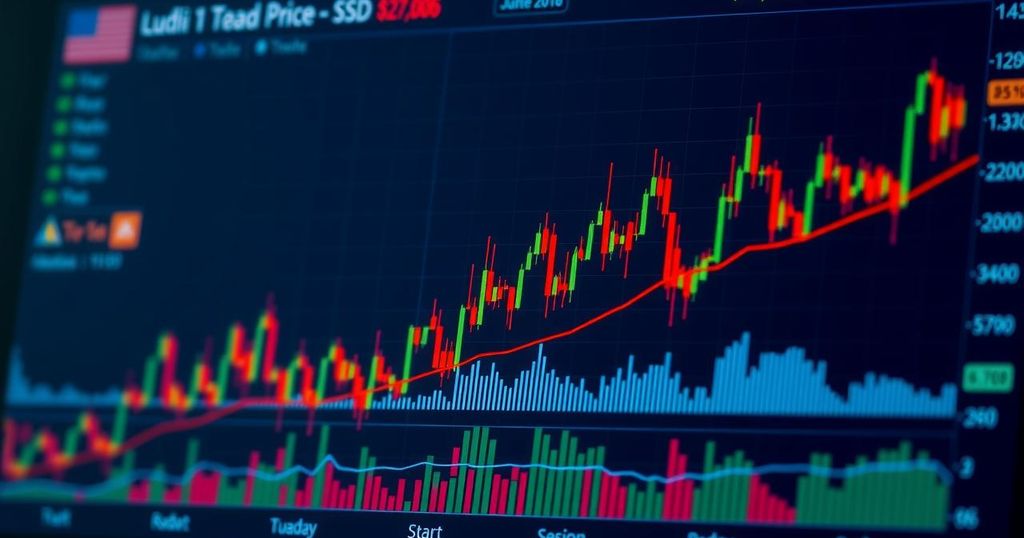Understanding the Factors Behind Bitcoin Price Volatility
This article explores the volatility of Bitcoin prices, highlighting the roles of retail investors and various factors such as supply and demand, market sentiment, technological advancements, external economic influences, and institutional interest. It examines how Bitcoin has evolved from a peer-to-peer currency to a recognized store of value, delving into the challenges and opportunities presented by its price fluctuations. Lastly, it discusses the future outlook for Bitcoin amidst evolving global economic conditions and technological progress.
The fluctuations in Bitcoin prices have captured the attention of diverse groups, including investors, technologists, and everyday consumers. The rapid movement of Bitcoin prices, ranging from dramatic surges to significant downturns, raises questions about the underlying factors contributing to these changes. The Impacts of Retail Investors Retail investors play a pivotal role in driving Bitcoin prices upward. These ordinary individuals engage in Bitcoin trading on various exchanges, often with the hope of realizing substantial returns over time. The cryptocurrency market operates continuously, allowing a greater number of retail investors to participate. However, this accessibility also means that their profits and losses can be significantly escalated. For instance, platforms such as Binance enable investments and transactions to occur within minutes, thus attracting numerous investors. Although the prospect of high returns lures many into the market, they must be cognizant of the accompanying risks. Factors Influencing Bitcoin Pricing Several critical elements influence the price of Bitcoin: 1. Supply and Demand: Like any other asset, the laws of supply and demand heavily influence Bitcoin prices. The cap of 21 million Bitcoins establishes a sense of scarcity, similar to gold, driving demand and, in turn, prices higher. 2. Market Sentiment: The cryptocurrency market’s inherent volatility often leads to price shifts based on news and events. From positive institutional acceptance to adverse regulatory developments, sentiment can significantly affect Bitcoin’s value. 3. Technological Advancements: Innovations within the blockchain network can elevate Bitcoin prices. Notable occurrences, such as “halving” events, where mining rewards are reduced, often result in significant price reactions. 4. External Economic Factors: Global economic situations, including inflation and economic instability, often drive investors toward Bitcoin as a secure asset. Additionally, government regulations can sway market perceptions—positive legislative frameworks might invigorate investor confidence, while more stringent measures could instigate panic. 5. Institutional Interest: The involvement of institutional investors has solidified Bitcoin’s position as a legitimate asset class. High-profile purchases, such as Tesla’s acquisition of Bitcoin, further augment demand and validate its market presence. Bitcoin as a Store of Value Though initially devised as an electronic currency facilitating peer-to-peer transactions, Bitcoin has increasingly been regarded as a store of value, akin to gold. Investors leverage Bitcoin as a hedge against inflation and volatility, thereby enhancing its demand. As both individuals and institutions gravitate toward Bitcoin, it solidifies its status as a fundamental asset in modern investment portfolios. Provided one invests strategically, the liquidity associated with Bitcoin may even offer superior market performance. Future Price Outlook Predicting the future trajectory of Bitcoin remains challenging, even for seasoned traders. However, as global acceptance of cryptocurrencies broadens and technical infrastructure evolves, Bitcoin appears poised for greater integration into global finance. Key drivers, including mass institutional adoption and clarity in regulation, are likely to shape the trajectory of Bitcoin pricing in the coming years. Despite enduring volatility, external factors suggest that Bitcoin possesses a promising future in financial markets. It is advisable for investors to remain informed and aware of market dynamics that could influence Bitcoin’s price, facilitating informed decision-making based on both immediate and long-term factors. Navigating Bitcoin Volatility Numerous elements contribute to the price fluctuations of Bitcoin. While volatility inherently presents challenges, it simultaneously creates opportunities. Investors are encouraged to monitor Bitcoin pricing diligently and consider the various influencing factors. Utilizing established cryptocurrency platforms, such as Binance, can provide valuable real-time data, assisting investors in staying abreast of market movements more effectively.
Bitcoin, a pioneering digital asset, was introduced with the intention of revolutionizing financial transactions through decentralization and blockchain technology. However, its role in the financial ecosystem has evolved, gaining prominence not only as a currency but also as a potential store of value, particularly amidst rising global economic uncertainties. The price of Bitcoin has been characterized by significant volatility, often driven by a confluence of factors ranging from market sentiment and investor behavior to external economic pressures. Understanding these dynamics is crucial for stakeholders in the cryptocurrency space, affecting both individual investment strategies and broader market trends.
In summary, the price of Bitcoin is influenced by a multitude of factors, including retail investor activity, supply and demand dynamics, market sentiment, and regulatory developments. The digital asset’s transformation into a recognized store of value underscores its significance in modern investment strategies. Despite the inherent volatility, the outlook for Bitcoin remains optimistic, driven by increasing institutional adoption and ongoing technological advancements. Investors are advised to approach the market with caution, maintaining awareness of the factors at play that could impact Bitcoin prices in both the short and long term.
Original Source: retailtechinnovationhub.com








Post Comment